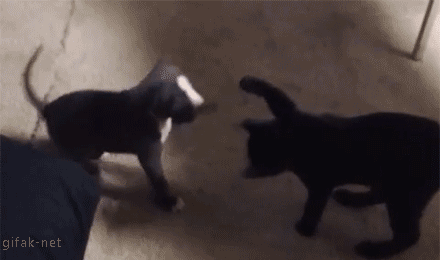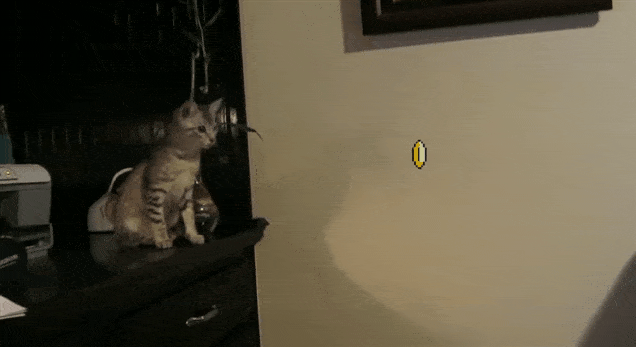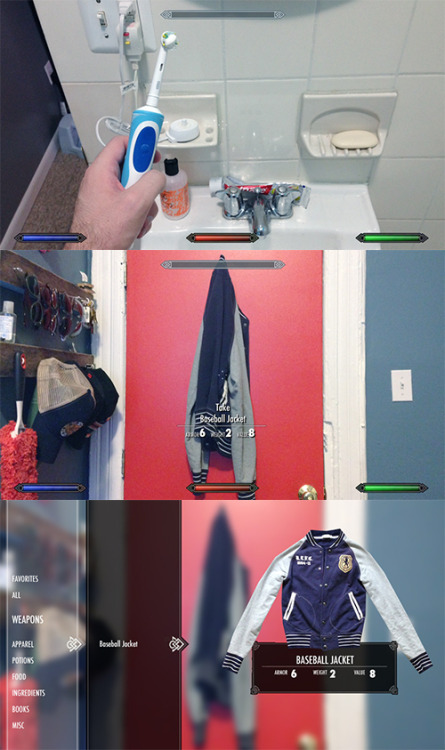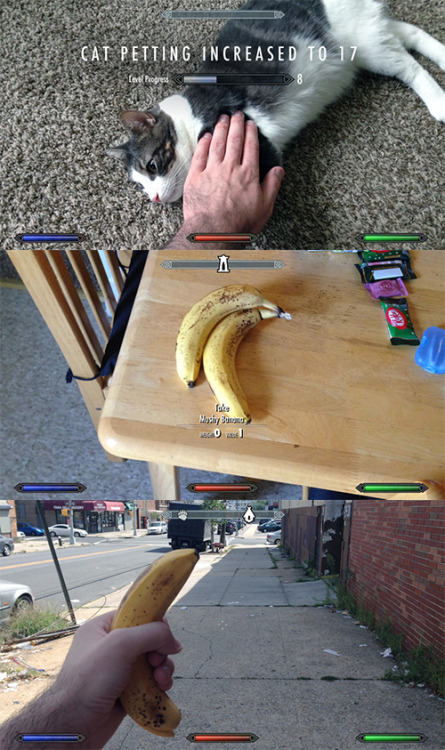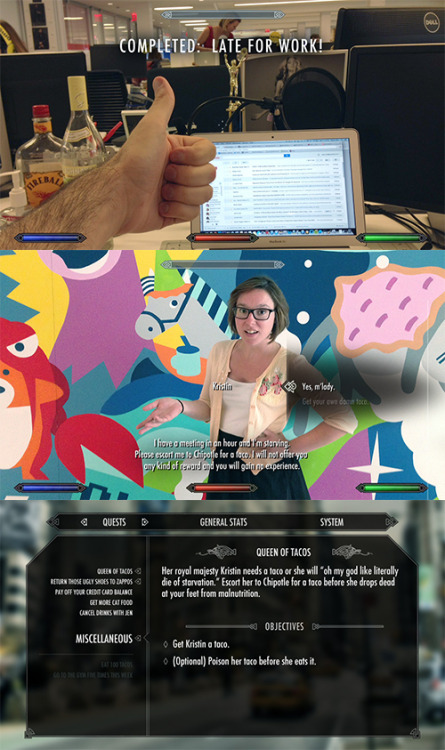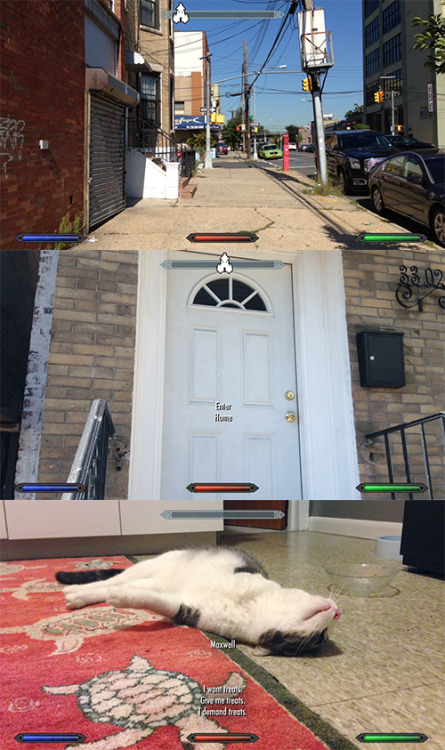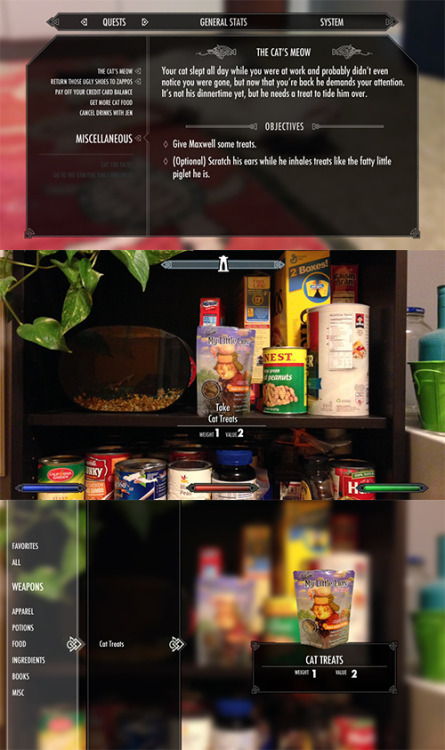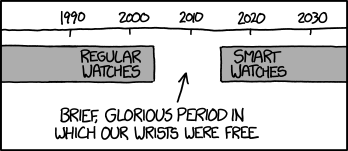Submitted by: (via darthbaloo)
Shared posts
‘Soviet Ghosts’ Captures Post-Apocalyptic Scenes Left Behind by the Fall of the USSR
![]()
Rebecca Litchfield is a photographer who has faced radiation exposure risks, arrest and interrogations, and even accusations of espionage… all for the sake of her project “Soviet Ghosts.”
You see, Litchfield is an avid urban explorer who has been fascinated by scenes of decay found in countries that were formerly part of the USSR and the Eastern Bloc.
Photographing and exploring the old Iron Curtain isn’t the easiest thing to turn into a project, she says:
Not many explorers travel to Russia, where the rules are very different, locations are heavily guarded and a strong military presence exists everywhere. There are serious consequences for getting caught. We managed to stay hidden for all of the trip, we maximised our stealthiness, ducking and diving into bushes and sneaking past sleeping security. But on day three our good fortune ran out as we visited a top secret radar installation. After walking through the forest, mosquitos attacking us from all directions, we saw the radar and made our way towards it, but just metres away suddenly we were joined by military and they weren’t happy…
Fortunately for Litchfield, she was able to wiggle out of that tricky situation and continue her adventure through more than 10 different countries.
She says that her goal is to capture the scenes as they are, highlighting their beauty in decay, “like a memory hanging on that will soon be lost in a breeze, a museum that no one gets to see.”
Here are some of the haunting photographs in the project:
![]()
![]()
![]()
![]()
![]()
![]()
![]()
![]()
![]()
![]()
![]()
![]()
![]()
![]()
![]()
![]()
![]()
![]()
![]()
![]()
![]()
![]()
The photos in the project have also been published in a book that’s available from $28 over on Amazon. You can also find more of Litchfield’s work over on her website.
Image credits: Photographs by Rebecca Litchfield and used with permission
Alienation: Strange Upside-Down Closeups Transform the Human Face Into Something Else
Tadeu... into nightmares!
![]()
The more you look at South-Africa based photographer Anelia Loubser‘s Alienation series, the more captivated you become. A simple idea on the surface — close-up, upside-down black-and-white portraits of people’s eyes and foreheads — the final images encourage you to dive deeper into each wrinkle and other so-called “imperfection” than almost any standard portrait might.
According to Loubser’s description of the series on Behance, Alienation was inspired by a profound Wayne Dyer quote:
If you change the way you look at things, the things you look at change.
With creative composition and excellent execution of a simple idea, she manages to put a picture to these words:
![]()
![]()
![]()
![]()
![]()
![]()
![]()
![]()
![]()
![]()
![]()
![]()
![]()
The concept reminds us of the famous upside-down drawing exercise. The idea behind this approach was to confuse the analytical left side of the brain, engaging the more abstract right side that would see the lines as they truly were and not as a group of already-defined concepts (i.e. nose, eyes, eyebrows, etc.).
Of course, some will inevitably be tempted to crane their necks or flip their computer screens to reframe the portraits in a more ‘normal’ light, but we hope you won’t do that. As Loubser says, “the work is on the one hand strangely aesthetic, on the other hand mysteriously eerie.” A little bit of discomfort isn’t just normal, it’s encouraged.
To see more from Loubser, head over to her Behance profile, check out her website, or give her Facebook page a like.
(via Photojojo)
Image credits: Photographs by Anelia Loubser, used under Creative Commons license
Sir Elton John Can Write Music for Any Lyrics
In this TV appearance from 2005, Elton John demonstrates how he can write music for any lyrics. And he does a damn fine job with what he’s got. (via Everlasting Blort)
Running Code Reviews with Confidence
Growing up, I learned there were two kinds of reviews I could seek out from my parents. One parent gave reviews in the form of a shower of praise. The other parent, the one with a degree from the Royal College of Art, would put me through a design crit. Today the reviews I seek are for my code, not my horse drawings, but it continues to be a process I both dread and crave.
Illustration:
Share This:
In this article, I’ll describe my battle-tested process for conducting code reviews, highlighting the questions you should ask during the review process as well as the necessary version control commands to download and review someone’s work. I’ll assume your team uses Git to store its code, but the process works much the same if you’re using any other source control system.
Completing a peer review is time-consuming. In the last project where I introduced mandatory peer reviews, the senior developer and I estimated that it doubled the time to complete each ticket. The reviews introduced more context-switching for the developers, and were a source of increased frustration when it came to keeping the branches up to date while waiting for a code review.
The benefits, however, were huge. Coders gained a greater understanding of the whole project through their reviews, reducing silos and making onboarding easier for new people. Senior developers had better opportunities to ask why decisions were being made in the codebase that could potentially affect future work. And by adopting an ongoing peer review process, we reduced the amount of time needed for human quality assurance testing at the end of each sprint.
Let’s walk through the process. Our first step is to figure out exactly what we’re looking for.
Determine the purpose of the proposed change
Our code review should always begin in a ticketing system, such as Jira or GitHub. It doesn’t matter if the proposed change is a new feature, a bug fix, a security fix, or a typo: every change should start with a description of why the change is necessary, and what the desired outcome will be once the change has been applied. This allows us to accurately assess when the proposed change is complete.
The ticketing system is where you’ll track the discussion about the changes that need to be made after reviewing the proposed work. From the ticketing system, you’ll determine which branch contains the proposed code. Let’s pretend the ticket we’re reviewing today is 61524—it was created to fix a broken link in our website. It could just as equally be a refactoring, or a new feature, but I’ve chosen a bug fix for the example. No matter what the nature of the proposed change is, having each ticket correspond to only one branch in the repository will make it easier to review, and close, tickets.
Set up your local environment and ensure that you can reproduce what is currently the live site—complete with the broken link that needs fixing. When you apply the new code locally, you want to catch any regressions or problems it might introduce. You can only do this if you know, for sure, the difference between what is old and what is new.
Review the proposed changes
At this point you’re ready to dive into the code. I’m going to assume you’re working with Git repositories, on a branch-per-issue setup, and that the proposed change is part of a remote team repository. Working directly from the command line is a good universal approach, and allows me to create copy-paste instructions for teams regardless of platform.
To begin, update your local list of branches.
git fetch
Then list all available branches.
git branch -a
A list of branches will be displayed to your terminal window. It may appear something like this:
* master
remotes/origin/master
remotes/origin/HEAD -> origin/master
remotes/origin/61524-broken-link
The * denotes the name of the branch you are currently viewing (or have “checked out”). Lines beginning with remotes/origin are references to branches we’ve downloaded. We are going to work with a new, local copy of branch 61524-broken-link.
When you clone your project, you’ll have a connection to the remote repository as a whole, but you won’t have a read-write relationship with each of the individual branches in the remote repository. You’ll make an explicit connection as you switch to the branch. This means if you need to run the command git push to upload your changes, Git will know which remote repository you want to publish your changes to.
git checkout --track origin/61524-broken-link
Ta-da! You now have your own copy of the branch for ticket 61524, which is connected (“tracked”) to the origin copy in the remote repository. You can now begin your review!
First, let’s take a look at the commit history for this branch with the command log.
git log master
Sample output:
Author: emmajane
Date: Mon Jun 30 17:23:09 2014 -0400
Link to resources page was incorrectly spelled. Fixed.
Resolves #61524.
This gives you the full log message of all the commits that are in the branch 61524-broken-link, but are not also in the master branch. Skim through the messages to get a sense of what’s happening.
Next, take a brief gander through the commit itself using the diff command. This command shows the difference between two snapshots in your repository. You want to compare the code on your checked-out branch to the branch you’ll be merging “to”—which conventionally is the master branch.
git diff master
How to read patch files
When you run the command to output the difference, the information will be presented as a patch file. Patch files are ugly to read. You’re looking for lines beginning with + or -. These are lines that have been added or removed, respectively. Scroll through the changes using the up and down arrows, and press q to quit when you’ve finished reviewing. If you need an even more concise comparison of what’s happened in the patch, consider modifying the diff command to list the changed files, and then look at the changed files one at a time:
git diff master --name-only
git diff master <filename>
Let’s take a look at the format of a patch file.
diff --git a/about.html b/about.html
index a3aa100..a660181 100644
--- a/about.html
+++ b/about.html
@@ -48,5 +48,5 @@
(2004-05)
- A full list of <a href="emmajane.net/events">public
+ A full list of <a href="http://emmajane.net/events">public
presentations and workshops</a> Emma has given is available
I tend to skim past the metadata when reading patches and just focus on the lines that start with - or +. This means I start reading at the line immediate following @@. There are a few lines of context provided leading up to the changes. These lines are indented by one space each. The changed lines of code are then displayed with a preceding - (line removed), or + (line added).
Going beyond the command line
Using a Git repository browser, such as gitk, allows you to get a slightly better visual summary of the information we’ve looked at to date. The version of Git that Apple ships with does not include gitk—I used Homebrew to re-install Git and get this utility. Any repository browser will suffice, though, and there are many GUI clients available on the Git website.
gitk
When you run the command gitk, a graphical tool will launch from the command line. An example of the output is given in the following screenshot. Click on each of the commits to get more information about it. Many ticket systems will also allow you to look at the changes in a merge proposal side-by-side, so if you’re finding this cumbersome, click around in your ticketing system to find the comparison tools they might have—I know for sure GitHub offers this feature.

Now that you’ve had a good look at the code, jot down your answers to the following questions:
- Does the code comply with your project’s identified coding standards?
- Does the code limit itself to the scope identified in the ticket?
- Does the code follow industry best practices in the most efficient way possible?
- Has the code been implemented in the best possible way according to all of your internal specifications? It’s important to separate your preferences and stylistic differences from actual problems with the code.
Apply the proposed changes
Now is the time to start up your testing environment and view the proposed change in context. How does it look? Does your solution match what the coder thinks they’ve built? If it doesn’t look right, do you need to clear the cache, or perhaps rebuild the Sass output to update the CSS for the project?
Now is the time to also test the code against whatever test suite you use.
- Does the code introduce any regressions?
- Does the new code perform as well as the old code? Does it still fall within your project’s performance budget for download and page rendering times?
- Are the words all spelled correctly, and do they follow any brand-specific guidelines you have?
Depending on the context for this particular code change, there may be other obvious questions you need to address as part of your code review.
Do your best to create the most comprehensive list of everything you can find wrong (and right) with the code. It’s annoying to get dribbles of feedback from someone as part of the review process, so we’ll try to avoid “just one more thing” wherever we can.
Prepare your feedback
Let’s assume you’ve now got a big juicy list of feedback. Maybe you have no feedback, but I doubt it. If you’ve made it this far in the article, it’s because you love to comb through code as much as I do. Let your freak flag fly and let’s get your review structured in a usable manner for your teammates.
For all the notes you’ve assembled to date, sort them into the following categories:
- The code is broken. It doesn’t compile, introduces a regression, it doesn’t pass the testing suite, or in some way actually fails demonstrably. These are problems which absolutely must be fixed.
- The code does not follow best practices. You have some conventions, the web industry has some guidelines. These fixes are pretty important to make, but they may have some nuances which the developer might not be aware of.
- The code isn’t how you would have written it. You’re a developer with battle-tested opinions, and you know you’re right, you just haven’t had the chance to update the Wikipedia page yet to prove it.
Submit your evaluation
Based on this new categorization, you are ready to engage in passive-aggressive coding. If the problem is clearly a typo and falls into one of the first two categories, go ahead and fix it. Obvious typos don’t really need to go back to the original author, do they? Sure, your teammate will be a little embarrassed, but they’ll appreciate you having saved them a bit of time, and you’ll increase the efficiency of the team by reducing the number of round trips the code needs to take between the developer and the reviewer.
If the change you are itching to make falls into the third category: stop. Do not touch the code. Instead, go back to your colleague and get them to describe their approach. Asking “why” might lead to a really interesting conversation about the merits of the approach taken. It may also reveal limitations of the approach to the original developer. By starting the conversation, you open yourself to the possibility that just maybe your way of doing things isn’t the only viable solution.
If you needed to make any changes to the code, they should be absolutely tiny and minor. You should not be making substantive edits in a peer review process. Make the tiny edits, and then add the changes to your local repository as follows:
git add .
git commit -m "[#61524] Correcting <list problem> identified in peer review."
You can keep the message brief, as your changes should be minor. At this point you should push the reviewed code back up to the server for the original developer to double-check and review. Assuming you’ve set up the branch as a tracking branch, it should just be a matter of running the command as follows:
git push
Update the issue in your ticketing system as is appropriate for your review. Perhaps the code needs more work, or perhaps it was good as written and it is now time to close the issue queue.
Repeat the steps in this section until the proposed change is complete, and ready to be merged into the main branch.
Merge the approved change into the trunk
Up to this point you’ve been comparing a ticket branch to the master branch in the repository. This main branch is referred to as the “trunk” of your project. (It’s a tree thing, not an elephant thing.) The final step in the review process will be to merge the ticket branch into the trunk, and clean up the corresponding ticket branches.
Begin by updating your master branch to ensure you can publish your changes after the merge.
git checkout master
git pull origin master
Take a deep breath, and merge your ticket branch back into the main repository. As written, the following command will not create a new commit in your repository history. The commits will simply shuffle into line on the master branch, making git log −−graph appear as though a separate branch has never existed. If you would like to maintain the illusion of a past branch, simply add the parameter −−no-ff to the merge command, which will make it clear, via the graph history and a new commit message, that you have merged a branch at this point. Check with your team to see what’s preferred.
git merge 61524-broken-link
The merge will either fail, or it will succeed. If there are no merge errors, you are ready to share the revised master branch by uploading it to the central repository.
git push
If there are merge errors, the original coders are often better equipped to figure out how to fix them, so you may need to ask them to resolve the conflicts for you.
Once the new commits have been successfully integrated into the master branch, you can delete the old copies of the ticket branches both from your local repository and on the central repository. It’s just basic housekeeping at this point.
git branch -d 61524-broken-link
git push origin --delete 61524-broken-link
Conclusion
Also in Issue № 402
Git: The Safety Net for Your Projects
by Tobias Günther
This is the process that has worked for the teams I’ve been a part of. Without a peer review process, it can be difficult to address problems in a codebase without blame. With it, the code becomes much more collaborative; when a mistake gets in, it’s because we both missed it. And when a mistake is found before it’s committed, we both breathe a sigh of relief that it was found when it was.
Regardless of whether you’re using Git or another source control system, the peer review process can help your team. Peer-reviewed code might take more time to develop, but it contains fewer mistakes, and has a strong, more diverse team supporting it. And, yes, I’ve been known to learn the habits of my reviewers and choose the most appropriate review style for my work, just like I did as a kid.
Alan Moore Just Wrote A Novel So Enormous People Can't Pick It Up
TadeuChapters include:
• One about Moore's brother in the fourth dimension
• A crime noir about local pastor James Harvey, the "father of the Gothic movement"
• A combination "ghost story" and "drug narrative"
• A chapter written like a Samuel Beckett play, "because the author once visited the town to play cricket"
• A completely "incomprehensible" chapter about James Joyce's daughter Lucia, "all written in a completely invented sub-Joycean text"
• And something about "a savage, hallucinating Enid Blyton", the children's book author.

The acclaimed author of Watchmen has recently finished his second novel, Jerusalem. Two interesting facts about it: 1) it's not set in Jerusalem, but Northampton, England, and 2) at over one million words, it's almost twice the size of Leo Tolstoy's War and Peace. Moore has said he doubts people will even be able to lift it.
eccellenze-italiane: Ponte Vecchio - Old Bridge by Andrea Bosio...
36 Candidatos a deputado que você precisa conhecer para essas eleições (Parte2)
TadeuAcho que nunca o circo do "pão e circo" foi tão misturado à política quanto na atual "democracia" brasileira...






























São muuuitas opções! hauahuahauahuahauahauahuaua
E se ainda não decidiu em quem votar, tem mais aqui. De nada!
jessehimself: Pennsylvania Judge Sentenced For 28 Years For...
TadeuWAT!!!

Pennsylvania Judge Sentenced For 28 Years For Selling Kids to the Prison System
Mark Ciavarella Jr, a 61-year old former judge in Pennsylvania, has been sentenced to nearly 30 years in prison for literally selling young juveniles for cash. He was convicted of accepting money in exchange for incarcerating thousands of adults and children into a prison facility owned by a developer who was paying him under the table. The kickbacks amounted to more than $1 million.
The Pennsylvania Supreme Court has overturned some 4,000 convictions issued by him between 2003 and 2008, claiming he violated the constitutional rights of the juveniles – including the right to legal counsel and the right to intelligently enter a plea. Some of the juveniles he sentenced were as young as 10-years old.
Ciavarella was convicted of 12 counts, including racketeering, money laundering, mail fraud and tax evasion. He was also ordered to repay $1.2 million in restitution.
His “kids for cash” program has revealed that corruption is indeed within the prison system, mostly driven by the growth in private prisons seeking profits by any means necessary.—-
Why might this not be a HUGE national story and his name not household? I’ll give you one guess what color those kids were.
OK Go Claims Apple Stole Its Music Video Concept To Kick Off iPhone 6 Event

A shot from OK Go’s “The Writing’s On The Will” video, left and Apple’s “Perspectives” video, right.
That collaborative pitch was rejected by the company, OK Go’s manager tells Businessweek, so the band decided to go ahead and make the video anyway for its song “The Writing’s On The Wall.”
As you can see below, the video employs a single, long camera shot that tracks through a room and shows the band members popping in and out of different set=ups that appear to look one way when approached from a certain angle, and have a new meaning when viewed from another. You, know, perspective.
Meanwhile, Apple’s, ahem, “Perspectives” video employs a lot of the same technique, only in that video, words appear in unexpected ways throughout, instead of guys with mirrors on their head and polka dot sweatshirts that match the backgrounds:
They do feel similar, but that can happen, right? One style influences another? After all, OK Go’s video has been viewed over 10 million times since it was posted in June, so maybe some of its visual trickery simply rubbed off on Apple.
Except not really, the band’s manager says: After Apple declined the band’s pitch, the company hired the same production company behind OK Go’s video and used the same director.
While Apple hasn’t returned Businessweek’s request for comment, “The videos speak for themselves, and you can draw your own conclusions,” the band’s manager says.
Whaddya think?
Take Our PollOK Go: Apple Ripped Off Our Video [Businessweek]
Artist Uses Forced Perspective Photography to Capture Whimsical Window Silhouettes
![]()
Spanish artist Pejac has never been a man contained by the borders of a canvas; his art, often silhouette based, bleeds out of frames and into the real world.
Most of the time, this feat is achieved with nothing more than a disregard for those borders, but one of his series of works instead used forced perspective photography to achieve the same effect and create the illusion that his whimsical silhouettes were playing with the world outside his window.
These forced perspective photographs caught the public’s eye when Pejac posted the picture above to his Facebook. It was a tribute to French high-wire walker, Philippe Petit, created in honor of the 40th anniversary of Petit’s legendary walk between the Twin Towers of the World Trade Center, and people were enamored with it.
![]()
The magazine Hi-Fructose got in touch with the artist to inquire about it and, as it turns out, this wasn’t his first experiment with forced perspective photography and window silhouettes. In 2011 he created more of these illusions while living in an apartment surrounded by security cameras in Valencia.
Those images, along with the few he created as a tribute to the iconic Petit, are included in the gallery below:
![]()
![]()
![]()
![]()
![]()
![]()
![]()
And here are a few behind the scenes photos that show the artist at work, and the photography setup:
![]()
![]()
![]()
To see more of Pejac’s work — and trust us when we say it is truly stunning, even when it doesn’t have a photographic element — be sure to visit his website and give him a follow on Facebook and Instagram.
(via Fubiz)
Image credits: Photographs courtesy of Pejac.
Pendulum Wave Demonstration
TadeuHypnotic lesson in physics!
Verizon Could Blow Up TV As We Know It Next Year

Verizon may launch its own digital video service by the middle of 2015, the company's CEO Lowell McAdam said in an investor conference according to reports from The Wall Street Journal and Reuters.
The Internet service provider is nearing agreements with major content companies, and McAdam told the Journal he's been having regular meetings with top executives from CBS, ABC, NBC, FOX, Dreamworks, and digital startups like Awesomeness TV.
Verizon's service sounds like it would essentially be a direct competitor to Netflix. The advantage, however, is that Verizon's offering would also be able to stream some live channels including content from major broadcasters and sporting events.
The reports come months after Verizon purchased Intel's media division in January, a sector of the company that focused on developing cloud TV products and services. It's possible that Verizon could be using these assets to develop its own viable alternative to cable. Intel was supposed to launch an internet TV service called OnCue last year, but the project was scrapped. Verizon bought the technology instead.
"I think over-the-top video is right around the corner," McAdam's said according to the Journal. "We've got the assets in place, and I don't feel like we need an awful lot more."
The news also comes as other tech companies are scrambling to come up with their own cord-cutting alternatives to cable. On Wednesday, for example, Sony signed a deal with Viacom that gives the company access to channels such as Comedy Central, Nickelodeon, and MTV for its own upcoming service, as Forbes reported.
McAdam also acknowledged that consumers are interested in more flexible options when streaming video on mobile devices. Consumers would rather pick and choose their favorite channels and shows than sift through hundreds of options.
Statistics have shown that services like Netflix and Hulu are already pulling some households away from cable television. According to a survey from Experian Marketing Services from earlier this year, households with a Netflix or Hulu subscription were nearly three times as likely not to have a cable subscription than the average household.
If Verizon does unveil its own Internet-based streaming service, it could move us one step closer to a future without traditional cable.
Join the conversation about this story »
The NSA Was Going to Fine Yahoo $250K a Day If It Didn't Join PRISM

When we first learned about NSA metadata collection, we wondered how readily the biggest tech companies acquiesced to the government. Today we start to find out. This is the story of how Yahoo was coerced into PRISM, as told by court documents cited by the Washington Post today.
ethically-wrong: mmmmbeefy96: grandhowler: Dude holy...



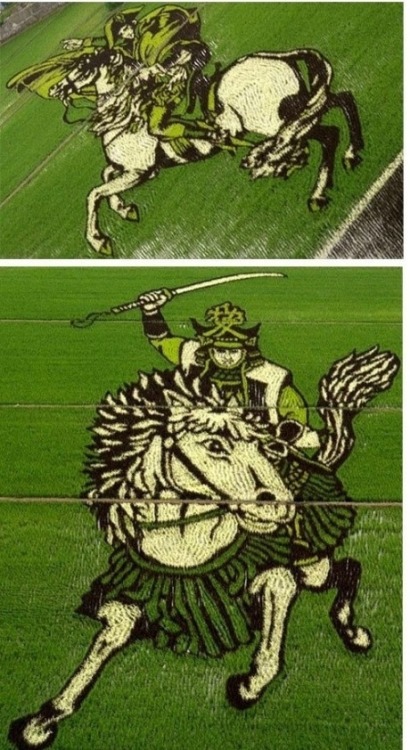
Dude
holy shit.
this is on a whole new level of patience
This is natural art.
Someone's trying to 3D print (most of) a car in six days
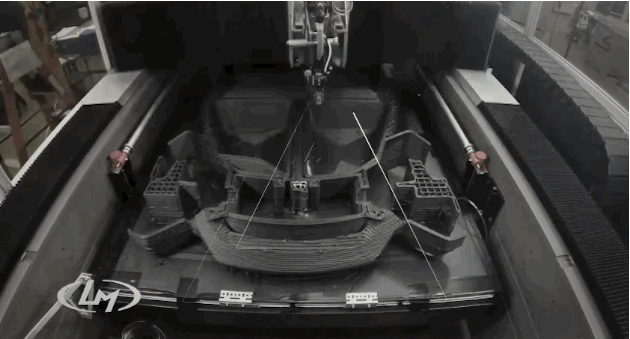 You can probably get quite a bit done by yourself in six days time, but could you build an entire car from scratch and take it for a test drive? Probably not. The folks at Local Motors are pretty confident that their 3D-printed car can roll out of...
You can probably get quite a bit done by yourself in six days time, but could you build an entire car from scratch and take it for a test drive? Probably not. The folks at Local Motors are pretty confident that their 3D-printed car can roll out of...
returntothestars: It’s like when Windows does this, but in real...
Woman in China Found to Have No Cerebellum
Tadeu[via Brandizzi]

A 24-year-old woman from Shandong Province in China was recently admitted to a hospital after presenting with symptoms of dizziness and nausea. Once a brain scan was performed, it was discovered that she had no cerebellum, with the brain cavity that it normally fills instead replaced with cerebrospinal fluid. The patient is one of only nine people known to have lived with this condition.
The cerebellum is the area of the brain associated with motor control, timing, coordination and fine movement. The patient described a lifelong difficulty with balance, and her mother said she couldn't stand on her own until age four nor walk unassisted until age seven. Yet the woman was determined overall to have only "mild to moderate" symptoms and "slightly irregular" movement.
The woman's case is an important data set with regard to the study of neuroplasticity, in which one or more regions of the brain adapt to compensate for brain damage in another area. Learn more about this fascinating case at io9.
How To Cheat Death

More fun with Death.
10 Questions to Ask in a Job Interview
TadeuQuestions about life, the universe and everything. Questions about questions. Questions about articles selected via http://en.wikipedia.org/wiki/Special:Random. With weird silent pauses in between.

When it comes to job interviews, we often see it as a one-way street, with the interviewer holding all the cards. In reality, though, it’s a two-way interaction. You are also interviewing them to see if their company is the right fit for you. Sure, sometimes desperation means you don’t have that luxury, but hopefully at some point you’ll have options and you’ll get to choose the company that’s best for you. A large part of determining that is the questions you ask at the end of the interview.
Beyond that, asking questions shows your interest in the job and the company. Q&A often only consists of a few minutes at the end of an hour-long interview, but it’s the final impression you’ll make, and according to one-third of HR managers, it can make or break your chances of getting the gig. When they inevitably ask you if you have questions, not having any indicates that you don’t really care about the position and are seemingly only going through the motions of an interview; conversely, asking good, incisive questions shows you’re knowledgeable about the field and sincerely curious about the job.
The goal with your own questions is to just get a better picture of the company as a whole and your potential role in it. You don’t want to get too detailed — save that for the follow-up interview, or when they offer you the job. For instance, you don’t want to ask about salary or benefits right off the bat; that will make it seem like you’re only interested in money, and not the position.
Elsewhere online, you can find lengthy lists of 30-50 questions to ask at the end of an interview. That’s far too many, however, and makes you pick and choose out of your head based on the scenario. In this post, we’ll give you just a few options from a few different categories that we think are the most important. You want to have at least 3 questions to ask, so come prepared with at least 6 just in case some get answered in the course of the interview.
Questions About the Position
- What is a day or week in the life of this position like? Can you show me an example of a project I’d be working on? — This is fairly straightforward. You obviously want to know what the daily/weekly workflow and tasks will be. For many jobs, it’s hard to nail down what a consistent day/week looks like, so the answer you get may be vague. But hopefully it’s enough to get a feel for whether you’re a good fit for the position. This is one that is often answered before the end of the interview, so be sure to have a back-up.
- What is the history of this position? Is it newly created? If not, why did the previous person leave it? — It’s beneficial to know the history of the position you’re interviewing for. Is it newly created? If so, you have the opportunity to set the standard. Has the position seen 5 employees in 5 years? You may want to think twice about taking it. This can be uncomfortable to ask, but is necessary on your end to know what kind of role you’re getting into.
Questions About the Future
- Is there room for advancement or career training in this position? — If the answer is no, you may not want the position. If the answer is yes, it’s helpful to know what you can aspire to. It also signals to the interviewer that you have ambition and that you set your sights high.
- Is there the opportunity for mentorship within this position? — This is somewhat dependent on the individual. For some folks, it’s very important to have career mentorship from a manager or executive; if this is important to you, ask away. This will signal to the interviewer that you are interested in growth — nobody wants a static employee who plateaus in their first week.
Questions About Success
- How will you define success for this position? — When expectations are vague, feedback is hard to come by, and you may be held to standards you didn’t know existed. You want to know exactly what they think a successful employee will accomplish in this position. There should be specific goals, too, versus something broad like, “Increase sales through marketing and advertising.”
- What are the most important objectives for this position in the first few months? — This is a follow-up question to the previous, and is important because how you kick off a new job is crucial in determining your future at that company. Will you immediately establish yourself as a go-getter, or as mediocre and inefficient? Knowing some immediate objectives will help you make sure you’re on the right course. You can also determine if the expectations are reasonable; if you’re asked to do too much in the first few months, it may be an unfortunate sign of things to come.
Questions About the Company
- What are the 5- and 10-year goals of the company? — This tells the interviewer that you’re thinking about the future, and that you care about where the company is going. You’ll get an idea of whether this is a company you want to stick around with or not.
- What’s the company culture like? Do co-workers eat lunch together? Do you have regular team events? — You see this question a lot in lists like this, but it’s often too vague. Asking simply “What’s the company culture like?” leaves a lot of wiggle room for the interviewer, and can be hard to answer. Asking some specific questions along with it helps you get a better understanding of the specific environment. You can also ask about after-work activities, about collaborating on projects, etc. The culture of where you work will go a long way in determining your satisfaction with the job.
Questions For the End
- Do you have any concerns about my qualifications? — This is a tough question to ask, but one that really sets you apart from other candidates. It may even throw off the interviewer, but in a good way, and will hopefully get them to voice some honest thoughts they have about your resume. If they bring up a couple problem areas they see, you can address them confidently and ease their fears. Hopefully you can go into the interview anticipating any concerns they may have, and be prepared to reassure them that you’re the right candidate.
- What are the next steps in the interview process? – This should always be your last question. This is simply for logistical purposes, and hopefully outlines whether there are more interviews, any homework for you (like writing or design tests), and what the timeline is like for hiring.
What questions have you had good luck with using in job interviews?



